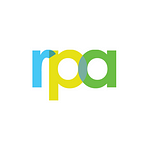By Isadora Chesler, SVP, Director, Video Production at RPA
Right now, ad agencies are churning out creative ideas that lean into accessible means to produce new video content, within the restrictions of ‘social distancing’ and ‘Safer at Home’ protocols.
From graphic and animation-based approaches, to stock and existing footage + UGC, and hiring influencers — these are the available methods in our current video production toolkit.
The question now is how do we concept live action-based ideas, that we can “control” in a more intermediate step, back into live-action shoots?
As we move into more relaxed government policies around ‘social distancing; and are able to secure shoot permits, the complexity of live-action shoot opportunities will evolve.
Below is a guide on how we might transition from our current government-enforced ‘Safer at Home’ emergency order, and into more modified accessibility, to once again shoot original video content, blending both a smaller-scale in-person crew and a remote approach for all stages of the production process, from ideation through completion.
Ideation
- Think visual storytelling, with off-camera VO. On-camera dialogue increases the crew size and equipment needs. With this approach, there’s potentially less coverage and takes needed to coordinate the talent’s physical action and their on-camera delivery of copy lines.
- Location considerations: feature exteriors and soundstages. Larger-scale environments allow for ‘social distancing’ of crew and talent, and their equipment. Exteriors shot in available daylight (versus night) require less crew and equipment, as they do not need to bring in lighting.
Bidding and Pre-Production
- For camera selection, consider options that can be operated by one person or a small-scale camera crew, for example:
- RED (used by David Fincher)
- iPhone (scalable in terms of expectations and approach)
- Drones
- For casting, consider remote capabilities for initial casting sessions and callbacks. Specifically, for initial casting:
- Talent self-submissions of video auditions
- Casting director-led session remote via Zoom
- Director-led remote callback session
- Agency and production co. attending “live” via Zoom
- For wardrobe, request talent to pull from their own wardrobe options, per client-approved spec.
- Stylist to fill in additional wardrobe items, if needed only
- Director/agency/client to approve via remote submission, directly from talent
Production and Shoot
- Minimize size of production crew necessary
- Video Village — remote capabilities to relay to agency/client
Post-Production
- Remote capabilities are available for all phases of post, including:
- Editing/offline
- VO recording & mixing
- Music composition or sourcing
- Graphics/animation/CG
- Finishing (telecine/color correction, online & cleanup, slating, etc.)
- Delivery
When live-action production does return, the immediate future will look different than shooting pre-Covid-19. This leaner crew size approach will rely on transparency upon engaging with production partners, how best to minimize staffing without losing efficiency and most important — supporting the creative integrity and client needs.
Production companies will need to negotiate with crew and their respective unions, how to scale back human interactions and respect “social distancing” protocols that might be actively in place, via a “micro-crew” approach.
The concepts put forth by agencies should be mindful of suggested techniques to support the health and safety of our community, while getting back to an abbreviated version of live-action shoots, something we are all very much looking forward to.
Originally posted on https://shots.net/
